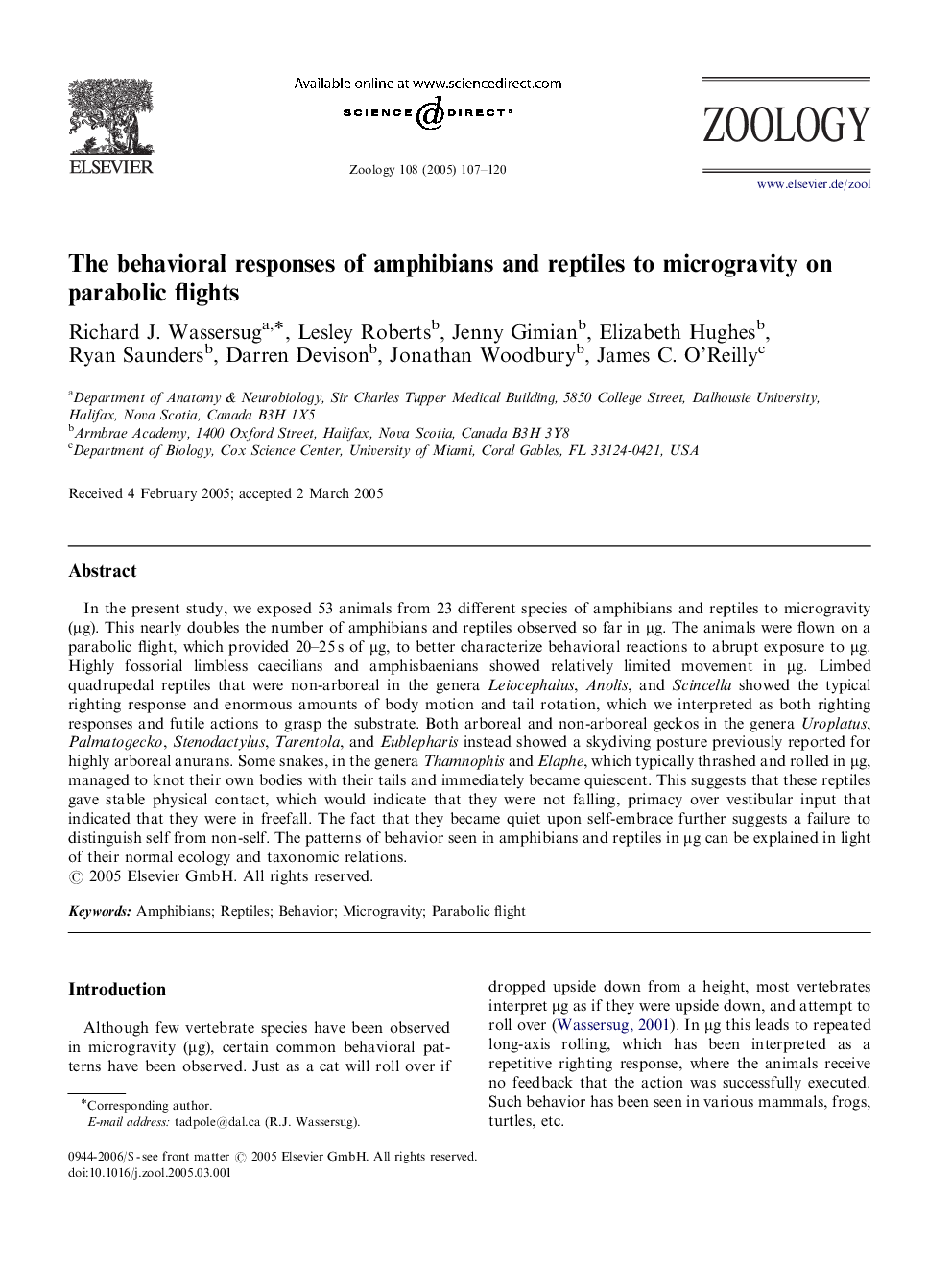| Article ID | Journal | Published Year | Pages | File Type |
|---|---|---|---|---|
| 9110105 | Zoology | 2005 | 14 Pages |
Abstract
In the present study, we exposed 53 animals from 23 different species of amphibians and reptiles to microgravity (μg). This nearly doubles the number of amphibians and reptiles observed so far in μg. The animals were flown on a parabolic flight, which provided 20-25 s of μg, to better characterize behavioral reactions to abrupt exposure to μg. Highly fossorial limbless caecilians and amphisbaenians showed relatively limited movement in μg. Limbed quadrupedal reptiles that were non-arboreal in the genera Leiocephalus, Anolis, and Scincella showed the typical righting response and enormous amounts of body motion and tail rotation, which we interpreted as both righting responses and futile actions to grasp the substrate. Both arboreal and non-arboreal geckos in the genera Uroplatus, Palmatogecko, Stenodactylus, Tarentola, and Eublepharis instead showed a skydiving posture previously reported for highly arboreal anurans. Some snakes, in the genera Thamnophis and Elaphe, which typically thrashed and rolled in μg, managed to knot their own bodies with their tails and immediately became quiescent. This suggests that these reptiles gave stable physical contact, which would indicate that they were not falling, primacy over vestibular input that indicated that they were in freefall. The fact that they became quiet upon self-embrace further suggests a failure to distinguish self from non-self. The patterns of behavior seen in amphibians and reptiles in μg can be explained in light of their normal ecology and taxonomic relations.
Related Topics
Life Sciences
Agricultural and Biological Sciences
Animal Science and Zoology
Authors
Richard J. Wassersug, Lesley Roberts, Jenny Gimian, Elizabeth Hughes, Ryan Saunders, Darren Devison, Jonathan Woodbury, James C. O'Reilly,
